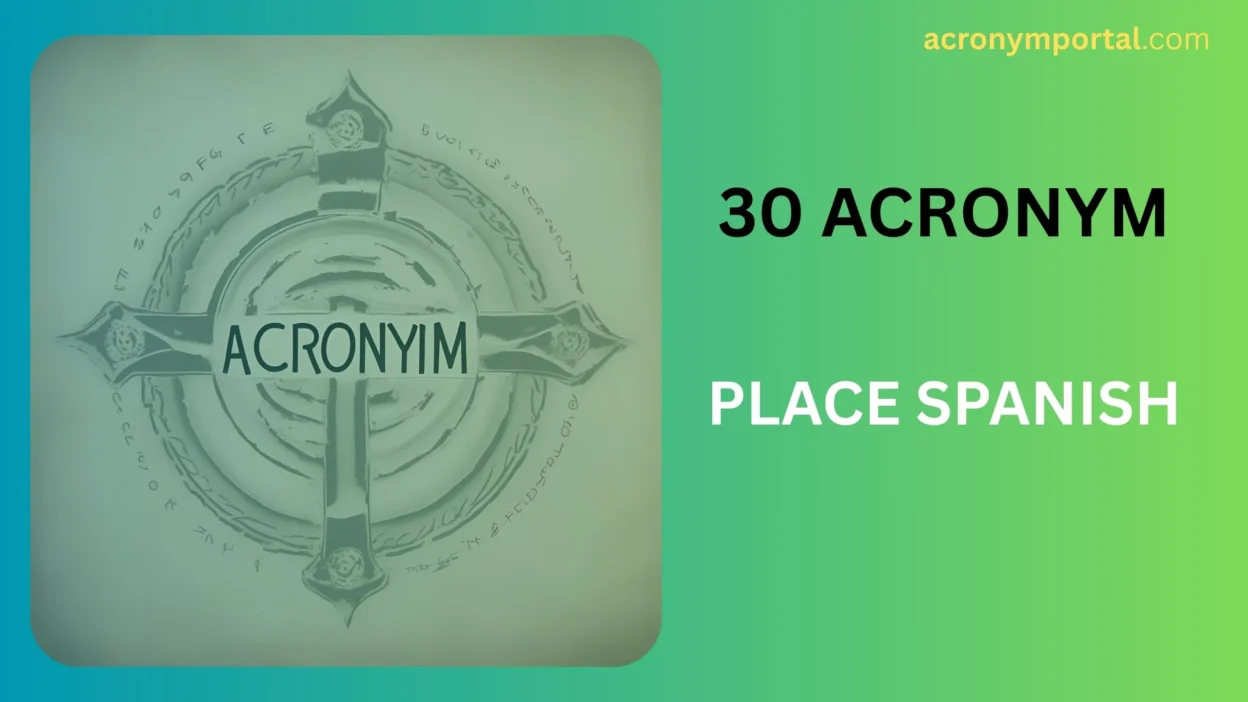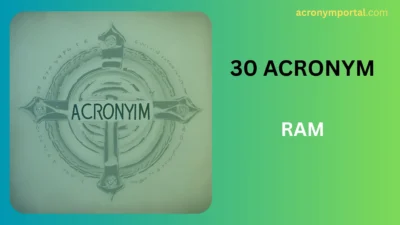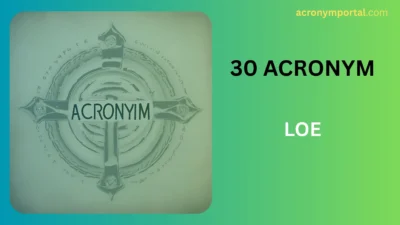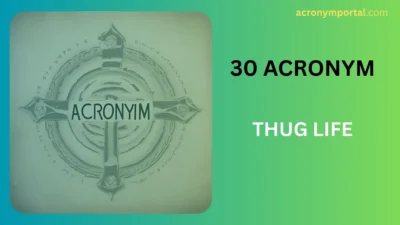When learning Spanish grammar, the PLACE acronym is a helpful guide to remember when to use “estar” instead of “ser.” It stands for:
- P: Position
- L: Location
- A: Action
- C: Condition
- E: Emotion
This acronym helps Spanish learners grasp the difference between the two verbs that both mean “to be” but are used in different contexts. However, there are many similar mnemonic tools and learning shortcuts—what we can call “PLACE acronym alternatives”—that make Spanish grammar easier to understand.
In this article, we’ll explore 30 useful acronyms and memory tools that serve the same purpose: to help learners understand complex grammar rules in a simple, memorable way. Each entry includes a brief explanation, an example, and guidance on when and how to use it—just like we did with the GPS acronym post.
🧠 30 PLACE Acronym Alternatives in Spanish Grammar
1. DOCTOR
Meaning: Use for “ser” — Description, Occupation, Characteristic, Time, Origin, Relationship.
Example: Ella es doctora. (She is a doctor.)
When to use: To contrast with PLACE; great for beginners.
2. HELP
Meaning: Use for “estar” — Health, Emotion, Location, Present Progressive.
Example: Estoy cansado. (I’m tired.)
When to use: Simpler version of PLACE; for young learners.
3. NOTE
Meaning: For “ser” — Nationality, Occupation, Time, Event.
Example: La fiesta es en mi casa. (The party is at my house.)
When to use: Short and useful in classroom notes.
4. FEEL
Meaning: Use for “estar” — Feelings, Emotions, Estar, Location.
Example: Estoy feliz. (I’m happy.)
When to use: When emotions are the focus of the lesson.
5. TOE
Meaning: Use for “ser” — Time, Origin, Event.
Example: Son las tres. (It’s 3 o’clock.)
When to use: Quick recap in grammar reviews.
6. LEAP
Meaning: Estar — Location, Emotion, Action (progressive), Physical condition.
Example: Estamos en clase. (We are in class.)
When to use: Great for visual learners and mind maps.
7. LOCO
Meaning: Location and Condition use “estar.”
Example: La silla está rota. (The chair is broken.)
When to use: Catchy and memorable for middle school students.
8. STOP
Meaning: Ser — Time, Origin, Profession, Traits.
Example: Soy profesor. (I’m a teacher.)
When to use: Great for comparing with “PLACE.”
9. ELF
Meaning: Estar — Emotion, Location, Feeling.
Example: Estás en casa. (You are at home.)
When to use: Often used in early Spanish lessons.
10. DO IT
Meaning: Ser — Description, Occupation, Identity, Time.
Example: Es ingeniero. (He is an engineer.)
When to use: Use when teaching personal identity.
11. TIP
Meaning: Ser — Time, Identity, Profession.
Example: Es la una. (It’s one o’clock.)
When to use: Good for rapid drills or worksheets.
12. ACE
Meaning: Estar — Action, Condition, Emotion.
Example: Estamos estudiando. (We are studying.)
When to use: Simple, works in games and quizzes.
13. RODE
Meaning: Ser — Relationship, Origin, Description, Event.
Example: Ella es mi amiga. (She is my friend.)
When to use: Ideal when teaching family and background.
14. PLACE+ING
Meaning: Adds emphasis on present progressive (action).
Example: Está corriendo. (He is running.)
When to use: When drilling present continuous.
15. CHOP
Meaning: Ser — Character, Hour, Origin, Profession.
Example: Es alto. (He is tall.)
When to use: Good for character description units.
16. ECHO
Meaning: Estar — Emotion, Condition, Health, Ongoing Action.
Example: Estoy enfermo. (I am sick.)
When to use: For wellness and feelings lessons.
17. SIMPLE
Meaning: Ser — Static facts: Identity, Material, Profession, Location (event), etc.
Example: La reunión es en Madrid.
When to use: For distinguishing events from people or things.
18. FELT
Meaning: Estar — Feeling, Emotion, Location, Temporary condition.
Example: Está feliz.
When to use: For emotional vocabulary drills.
19. REAL
Meaning: Ser — Relationship, Event, Attributes, Location (event).
Example: El concierto es en Barcelona.
When to use: Use when distinguishing physical from conceptual locations.
20. CHAT
Meaning: Ser — Character, Hour, Age, Time.
Example: Es joven.
When to use: When talking about people’s traits.
21. PACE
Meaning: Estar — Position, Action, Condition, Emotion.
Example: Está sentado.
When to use: Ideal for posture-related lessons.
22. COP
Meaning: Ser — Character, Occupation, Place of origin.
Example: Soy de México.
When to use: Good for short memory-based tasks.
23. BEEF
Meaning: Ser — Beliefs, Event, Essence, Facts.
Example: Es importante.
When to use: For abstract or philosophical ideas.
24. MOPE
Meaning: Estar — Mood, Ongoing actions, Position, Emotion.
Example: Está de mal humor.
When to use: For moody or emotional units.
25. TEAL
Meaning: Estar — Temporary, Emotion, Action, Location.
Example: Estoy enojado.
When to use: For emotions and temporary conditions.
26. RIDE
Meaning: Ser — Relationship, Identity, Description, Event.
Example: Es mi hermano.
When to use: When talking about people.
27. HOPE
Meaning: Estar — Health, Ongoing action, Position, Emotion.
Example: Estoy sentado.
When to use: Useful in health or wellness lessons.
28. NICE
Meaning: Ser — Nationality, Identity, Characteristics, Event.
Example: Soy colombiano.
When to use: For introductions and cultural lessons.
29. TACO
Meaning: Ser — Time, Attributes, Character, Origin.
Example: Son las cinco.
When to use: Fun for food-related mnemonic games.
30. CAPE
Meaning: Estar — Condition, Action, Position, Emotion.
Example: Está cansada.
When to use: Especially good for describing states of being.
🎯 Choosing the Right Mnemonic for “Ser” vs. “Estar”
- For beginners: Use catchy acronyms like DOCTOR and PLACE.
- For younger learners: Try playful ones like LOCO, TACO, or ELF.
- For exam prep: Use precise ones like NOTE, TIP, or TOE.
- For emotional context: Pick ones that include emotion, feeling, or health, like HELP, FELT, or HOPE.
🧭 Final Thoughts
Just like using GPS for navigation, grammar acronyms like PLACE help you find your way through the twists and turns of Spanish verbs. But as you grow in your language journey, you’ll discover that having a toolbox of memory tricks like the ones above will sharpen your fluency and make learning more intuitive.
Pick acronyms that speak to your learning style—visual, emotional, structured, or playful—and switch them up depending on your needs. Whether you’re teaching, learning, or refreshing, these shortcuts can make all the difference.




